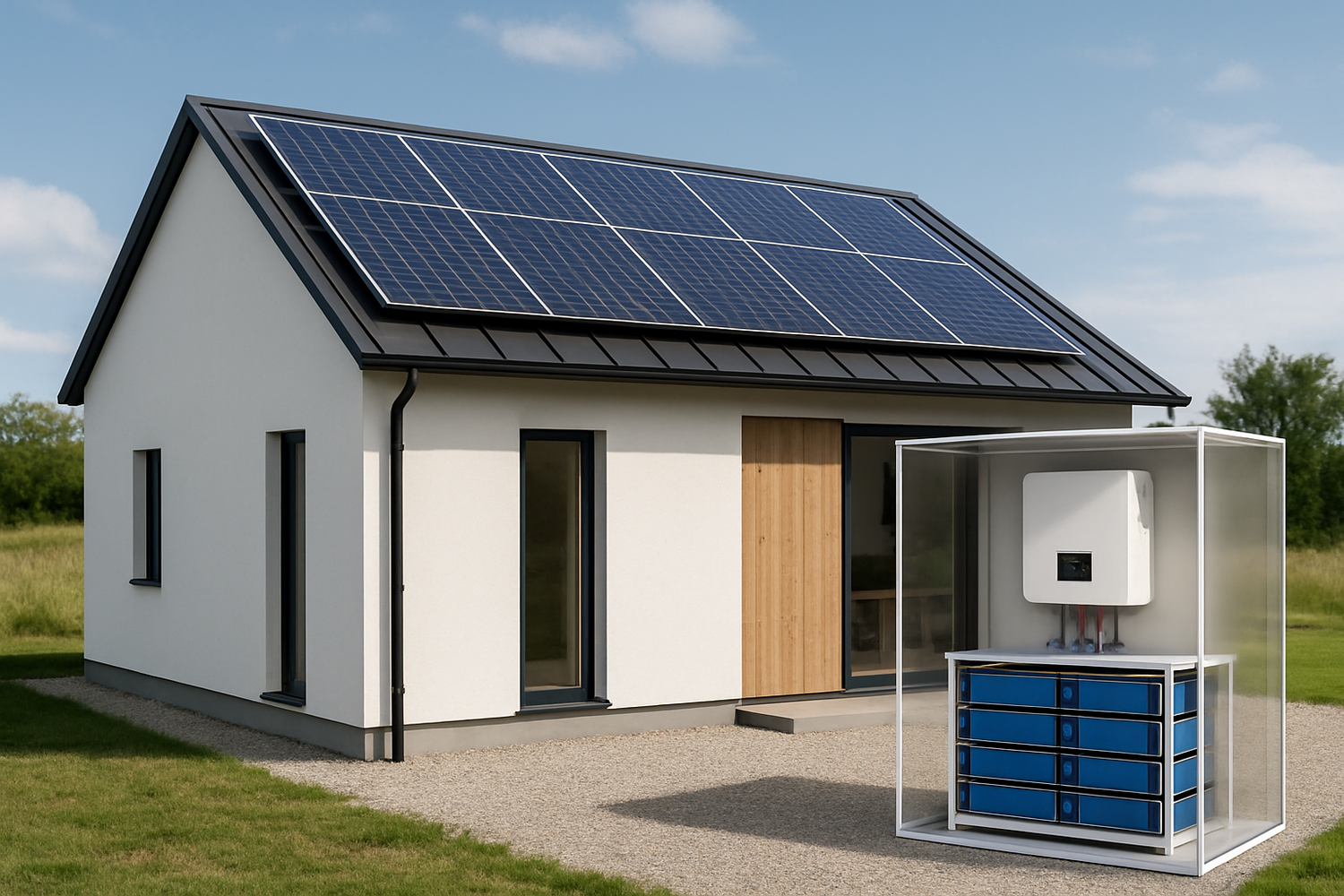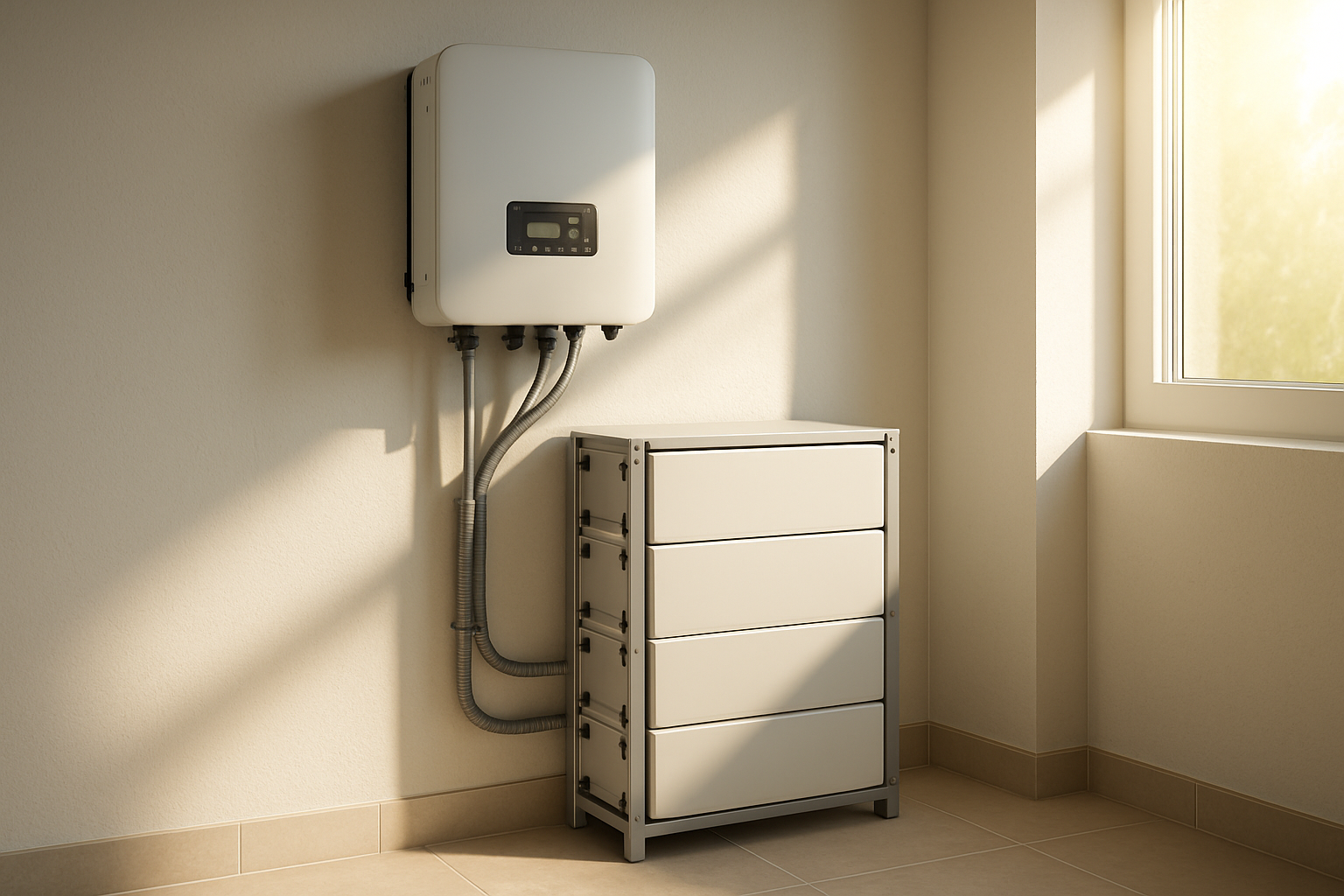Achieving energy independence with an off-grid solar system is a significant step towards self-sufficiency and sustainability. At the heart of this system is the battery bank, a critical component that stores solar energy for use when the sun isn't shining. Correctly sizing this battery bank is paramount for a reliable power supply. Among the available technologies, lithium iron phosphate (LiFePO4) batteries have become a leading choice due to their high performance, safety, and longevity.
Understanding Your Energy Consumption
Before you can determine the size of your battery bank, you must first understand how much energy your home uses. This process, often called an energy audit, is the foundational step in designing any off-grid solar power system.
The Energy Audit: Your First Step
An energy audit involves listing every electrical appliance and device you intend to use, its power consumption in watts, and the number of hours you expect to use it each day. Multiplying the wattage by the hours of use gives you the daily energy consumption in watt-hours (Wh). Summing up the watt-hours for all devices provides your total daily energy requirement, which can be converted to kilowatt-hours (kWh) by dividing by 1,000. An average off-grid home might use between 10 to 20 kWh per day, a significant reduction from the typical grid-connected home which can use 30 kWh or more.
| Appliance | Power Rating (Watts) | Hours of Use/Day | Daily Energy (Wh) |
|---|---|---|---|
| LED Lights (x10) | 100 | 5 | 500 |
| Energy Star Refrigerator | 150 | 8 (cycle time) | 1200 |
| Laptop Charger | 65 | 4 | 260 |
| Television | 120 | 3 | 360 |
| Well Pump | 750 | 1 | 750 |
| Total | 3070 Wh or 3.07 kWh |
Factoring in Seasonal Variations and Peak Loads
Your energy consumption will likely change with the seasons. You might use more power for lighting and indoor activities during the winter, while summer could bring increased usage from fans or air conditioning. It is crucial to design your system based on the period of highest demand and lowest solar production, which is typically the winter months. Also, consider your peak load—the maximum amount of power you might draw at one time. Your system's inverter and battery bank must be able to handle this instantaneous demand.
Sizing Your Lithium Battery Bank
With a clear picture of your energy needs, you can now calculate the required capacity of your lithium battery bank. This calculation involves a few key technical metrics and a straightforward formula.
Key Metrics for Battery Sizing
Several factors are critical for an accurate calculation:
- Kilowatt-hours (kWh): This is the total energy storage capacity you need.
- Depth of Discharge (DoD): This refers to the percentage of the battery's capacity that can be safely used. LiFePO4 batteries excel here, offering a DoD of 80-100%, compared to about 50% for traditional lead-acid batteries. This means you can use more of the stored energy.
- Days of Autonomy: This is the number of consecutive cloudy days your battery bank can power your home without any solar input. A typical recommendation is 2-3 days for resilience.
- System Efficiency: Energy is lost during conversion from DC (battery) to AC (appliances) and within the wiring. A modern, well-designed system might have an overall efficiency of 85-90%.
The Sizing Formula: A Step-by-Step Calculation
To determine your required battery bank capacity, use the following formula:
Total Battery Capacity (kWh) = (Average Daily Energy Use (kWh) × Days of Autonomy) / (Depth of Discharge × System Efficiency)
Let’s use an example. Suppose your home requires 10 kWh per day, you want 2 days of autonomy, and you are using LiFePO4 batteries with a 90% DoD and a system efficiency of 85%.
Total kWh = (10 kWh × 2) / (0.90 × 0.85)
Total kWh = 20 / 0.765
Total kWh ≈ 26.14 kWh
In this scenario, you would need a battery bank with a total capacity of at least 26.14 kWh. Disclaimer: This calculation is for estimation purposes. It is advisable to consult with a professional installer for a precise system design tailored to your specific location and needs.
From kWh to the Number of Batteries
Once you know the total kWh required, you can determine how many individual batteries you need. This depends on the voltage and amp-hour (Ah) rating of the batteries you choose. For example, a 48V 100Ah LiFePO4 battery has a capacity of 4.8 kWh (48V × 100Ah = 4800Wh). To achieve the 26.14 kWh target, you would need:
Number of Batteries = 26.14 kWh / 4.8 kWh/battery ≈ 5.44. You would need to round up to 6 batteries.
System Voltage and Configuration
The overall voltage of your battery bank is a crucial design choice. Most residential off-grid systems use 12V, 24V, or 48V configurations. For larger homes, 48V systems are generally more efficient as they allow for smaller, less expensive wiring and are compatible with more powerful inverters.
Series vs. Parallel Connections
You can achieve your desired system voltage and capacity by connecting batteries in series or parallel.
- Series Connection: Connecting batteries in series (positive to negative) increases the total voltage while the amp-hour capacity remains the same. For example, connecting four 12V 100Ah batteries in series creates a 48V 100Ah battery bank.
- Parallel Connection: Connecting batteries in parallel (positive to positive, negative to negative) increases the total amp-hour capacity while the voltage remains the same. Connecting four 12V 100Ah batteries in parallel results in a 12V 400Ah battery bank.
Often, a combination of series and parallel connections is used to build a battery bank that meets both the voltage and capacity requirements of the off-grid system.
Beyond the Calculation: Practical Considerations
Sizing your battery bank correctly is more than just a mathematical exercise. Several practical factors ensure the long-term health and performance of your energy storage system.
The Role of the Battery Management System (BMS)
A quality lithium battery will include an integrated Battery Management System (BMS). The BMS is the brain of the battery, protecting the cells from overcharging, over-discharging, extreme temperatures, and short circuits. It ensures each cell is balanced, which is vital for maximizing the battery's lifespan and performance.
Planning for Scalability
Your energy needs may grow over time. Choosing a modular lithium battery system allows for easy expansion. You can add more batteries to your bank in the future without needing to redesign the entire system, providing a scalable solution that adapts to your changing lifestyle.
Performance and Longevity
The performance of your energy storage is influenced by more than just its size. As detailed in an ultimate reference on solar storage performance, factors such as operating temperature and the rate of charge and discharge play a significant role. LiFePO4 batteries are known for their long cycle life, often rated for thousands of cycles, ensuring reliable power for many years.
Your Path to Energy Independence
Determining the right number of lithium batteries for your off-grid home is a process of careful planning and calculation. By starting with a detailed energy audit, applying the correct sizing formula, and considering practical factors like system voltage and scalability, you can build a robust and reliable energy storage system. A well-designed system, centered around high-quality LiFePO4 batteries, is the cornerstone of true energy independence, providing clean and dependable power for years to come. The falling costs of battery storage, as noted by the International Energy Agency (IEA), are making these systems more accessible than ever, accelerating the transition to renewable energy.
Frequently Asked Questions
How many days of autonomy are recommended for an off-grid home?
For most residential off-grid systems, 2 to 3 days of autonomy is a safe and common recommendation. This provides a reliable buffer against extended periods of cloudy weather, ensuring your home remains powered. However, this can be adjusted based on your local climate and risk tolerance.
What is the advantage of a 48V battery system over a 12V system?
A 48V system is generally more efficient for a complete off-grid home. Higher voltage results in lower current for the same amount of power, which reduces energy loss in the wiring. This allows for the use of thinner, less expensive copper cables and makes the system more compatible with larger, more powerful inverters needed for a whole-house setup.
Can I mix different types or ages of lithium batteries in my bank?
It is strongly recommended not to mix batteries of different chemistries, capacities, or ages within the same battery bank. Mismatched batteries can lead to imbalances in charging and discharging, causing stress on individual units, reducing overall system performance, and potentially shortening the lifespan of the entire bank.
Why are LiFePO4 batteries a preferred choice for off-grid applications?
LiFePO4 (Lithium Iron Phosphate) batteries offer several key advantages for off-grid homes. They are known for their exceptional safety and thermal stability, reducing the risk of thermal runaway. They also provide a very long cycle life (thousands of cycles), a high depth of discharge (80-100%), and maintain their performance over a wide range of temperatures, making them a durable and reliable long-term energy storage solution.





Leave a comment
All comments are moderated before being published.
This site is protected by hCaptcha and the hCaptcha Privacy Policy and Terms of Service apply.